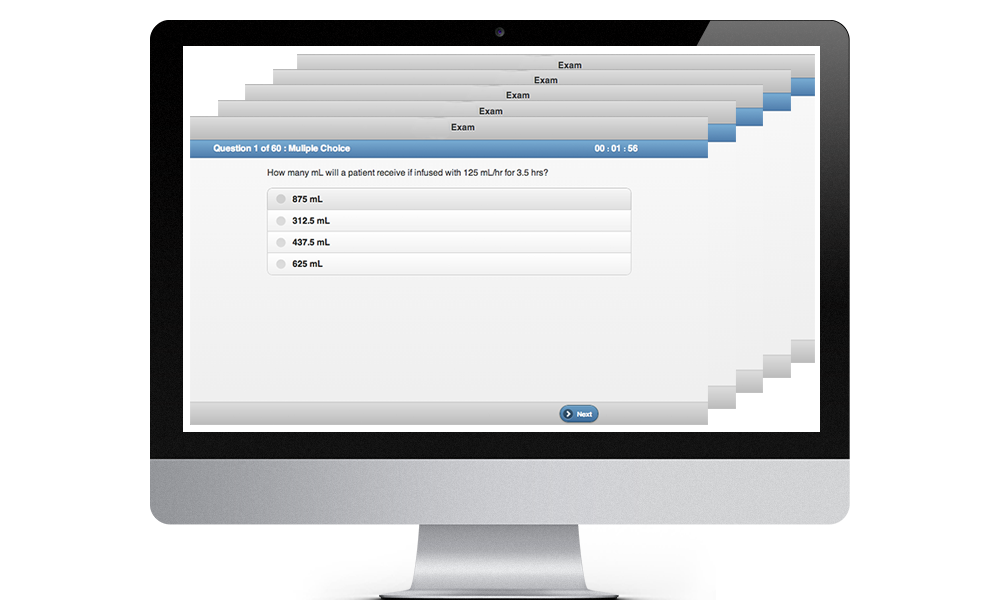First Responder Practice Test
Question 1 |
Cyanosis. | |
Clutching the neck. | |
Inability to speak. | |
Violent coughing. |
Question 2 |
help with simple face mask ventilation. | |
help with bag mask ventilation. | |
stand by and maintain scene safety. | |
help the second rescuer by going to get the AED. |
Question 3 |
check for a pulse. | |
activate the emergency response system and get the AED. | |
begin ventilating the patient. | |
automatically begin chest compressions. |
Question 4 |
moderate. | |
non-existent. | |
extremely low. | |
high. |
Question 5 |
insert a bite stick. | |
use the jaw thrust maneuver. | |
position the patient on their side. | |
use the head tilt chin lift maneuver. |
Question 6 |
pinch the patient's nostrils shut and place your mouth over their mouth creating an airtight seal. | |
there is no need to create a seal due to the child's smaller lung volume. | |
place your mouth over the infants nose and mouth to create an airtight seal. | |
close the patient's mouth and breath only through their nose. |
Question 7 |
Therapy regulator. | |
Continuous flow regulator. | |
High pressure regulator. | |
Peak flow regulator. |
Question 8 |
4 minutes. | |
3 minutes. | |
5 minutes. | |
2 minutes. |
Question 9 |
2 or 3 fingers. | |
your thumb and 1 finger. | |
just your thumb. | |
1 finger only. |
Question 10 |
hold the mask to his face while diverting his attention. | |
Restrain the patients hands by tying them to the stretcher. | |
Put the straps of the mask on tighter. | |
Have the patient's mother hold the mask close to his face. |
|
List |
EMR Exam
Sign up today for our EMR-First Responder Practice Test Program and join the thousands of others passed their certification exam after studying with Med Preps. Improve your chances of passing the first time to 98.5% with our proven system and our database of 1000+ First Responder practice test questions. Our program includes
- Unlimited EMR full-length exams and focus quizzes
- Instant grading, explanations, and progress tracking
- Online and mobile access, any time, any where
We’re so confident in our program that we offer a 100% pass guarantee. Sign up and join the thousands of other Emergency Medical Responders and First Responders that passed their EMR-First Responder Certification Exam on their first try.





